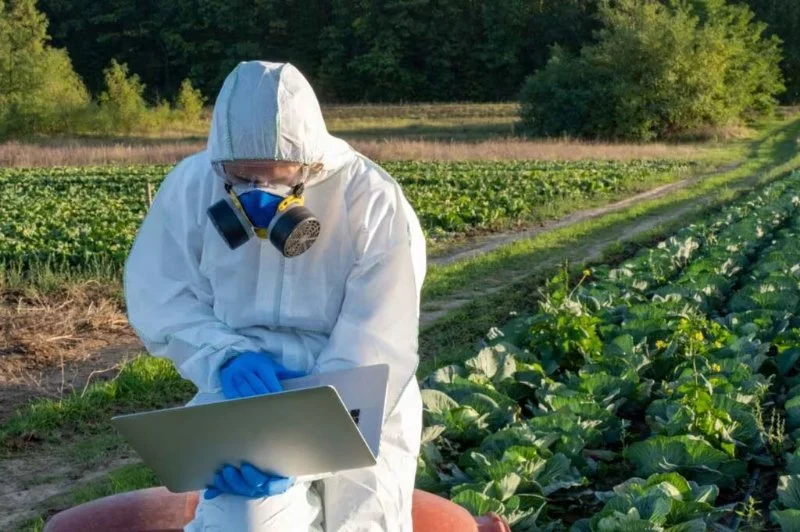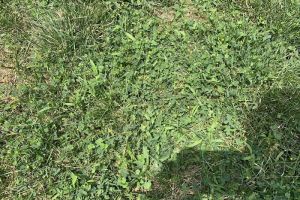
- Introduction to State-Specific Pest Control Practices
- Regional Differences in Pest Problems
- Pest Control Laws and Regulations by State
- Popular Pest Control Techniques Across States
- Adapting to Local Pest Challenges
1. Introduction to State-Specific Pest Control Practices
Pest control practices are not one-size-fits-all. Depending on the climate, geography, and local regulations, pest management strategies can differ greatly from state to state in the U.S. Some areas face specific pest challenges that are unique to their region, while others have strict laws governing how pest control treatments can be applied. Understanding these state-specific differences is crucial for homeowners, businesses, and pest control professionals looking to address pest problems effectively while complying with local laws.
1.1. Why Pest Control Practices Vary
Several factors influence how pest control is managed across the U.S. These include the local climate, type of pests, regional laws, and community awareness. For example, certain pests are more prevalent in humid regions, while others thrive in drier climates. Local regulations, such as restrictions on pesticide use or the need for environmentally friendly treatments, can also dictate the methods used in a particular area.
1.2. The Importance of Tailored Pest Control
Using a generic pest control method may not always be effective in certain regions. Tailoring your pest management approach to the specific environment ensures higher success rates. Understanding local pest behavior, habitat, and potential risks allows homeowners and pest control services to choose the most appropriate treatments.
2. Regional Differences in Pest Problems
The types of pests that thrive in different parts of the U.S. vary widely. In warmer, humid climates, you might face more issues with mosquitoes, termites, and cockroaches, while colder regions might see a higher prevalence of rodents seeking warmth inside homes. Recognizing these regional differences is key to selecting the right pest control method.
2.1. Pest Issues in Southern States
The southern U.S. states, like Florida and Texas, are known for their warm, humid climate, making them hotspots for pests like mosquitoes, termites, and ants. In these areas, pest control practices often focus on preventing the spread of termites, which can cause significant damage to homes, as well as mosquito-borne diseases. The warm climate also makes it easier for pests like cockroaches to thrive, leading to a need for year-round pest management strategies.
2.2. Pest Challenges in the Northeast and Midwest
In contrast, states in the Northeast and Midwest, such as New York and Illinois, face different pest control challenges due to colder winters. Rodents like mice and rats often seek shelter indoors during the winter months, creating a surge in rodent control needs. Additionally, these areas are prone to seasonal pests like ants and spiders, which can be controlled using different methods depending on the season.
2.3. West Coast Pest Problems
On the West Coast, states like California face unique pest problems due to their diverse climates. The dry, arid conditions in many parts of California make it ideal for pests like termites and rodents to thrive. In urban areas, there’s also a growing problem with bedbugs. Pest control in these areas may focus more on proactive monitoring and controlling termite infestations, especially in older homes or buildings.
3. Pest Control Laws and Regulations by State
Every state has its own laws and regulations that govern the application of pest control treatments. These regulations can affect the type of chemicals used, how pest control companies operate, and the licensing requirements for pest control professionals.
3.1. Pesticide Restrictions
In some states, there are stringent restrictions on the use of certain pesticides due to environmental concerns or health risks. California, for example, has some of the strictest pesticide regulations in the country. Pesticide use is heavily monitored, and pest control professionals must comply with the state's rigorous rules to minimize risks to human health and the environment.
3.2. Licensing and Certification
In many states, pest control professionals must be licensed or certified before they can apply treatments. For example, in Florida, pest control operators are required to have state-issued licenses, and they must complete training and exams to ensure they are knowledgeable about pest control methods, regulations, and safety standards. Licensing ensures that pest control practices are carried out by trained professionals who understand the local rules and regulations.
3.3. Organic Pest Control Regulations
With growing interest in organic pest control solutions, many states have developed guidelines around the use of non-toxic or eco-friendly methods. Some states encourage the use of organic treatments, particularly in areas like schools or healthcare facilities, where chemical exposure must be minimized. States like Oregon and California have specific certifications for organic pest management to ensure environmentally responsible methods are being used.
4. Popular Pest Control Techniques Across States
While pest control techniques vary by state, some methods are more commonly used in certain regions due to the types of pests they address. Below, we explore some of the most popular pest control methods that are widely practiced across different U.S. regions.
4.1. Integrated Pest Management (IPM)
Integrated Pest Management (IPM) is a holistic approach to pest control that focuses on long-term prevention and minimal environmental impact. IPM strategies are widely used across the U.S., particularly in states with strict environmental regulations. The method involves monitoring pest populations, identifying specific pest problems, and using a combination of physical, chemical, and biological methods to manage pests. This approach reduces reliance on pesticides and helps maintain ecological balance.
4.2. Chemical and Non-Chemical Treatments
While some states, like California, focus on limiting chemical pesticides, other states may still rely on more traditional chemical treatments for pest control. These chemicals are highly regulated, and pest control companies must use them according to state guidelines. In addition, many regions are adopting non-chemical alternatives, such as traps, diatomaceous earth, and natural repellents, which are becoming more popular due to their eco-friendly nature.
4.3. Physical Barriers and Exclusion Methods
In areas with severe rodent or termite problems, physical barriers and exclusion methods are popular techniques. Sealing cracks in foundations, using mesh screens, and installing rodent barriers are common solutions used in states like New York and Illinois, where winter weather drives pests indoors. These methods prevent pests from entering homes in the first place and are an effective way to minimize infestations.
5. Adapting to Local Pest Challenges
Each state has its own unique set of pest challenges, and adapting to these challenges is essential for effective pest control. Here are some tips for managing pests based on your location:
5.1. Understanding Local Pest Behavior
Different pests behave differently depending on the climate and environment. For example, mosquitoes in the South are more active during the warm months, while termites in the Midwest may be more of a year-round concern. By understanding local pest behavior, you can adapt your pest control strategies to address seasonal variations and local pests.
5.2. Timing Your Pest Control Efforts
In warmer regions, pest control might need to be done year-round, especially for pests like ants and cockroaches. In colder climates, pest control efforts may be focused more on rodents during the winter months. Understanding the best times to treat your home based on the type of pests in your area ensures maximum effectiveness.
For those looking for tailored pest control products and solutions, visit PestControlHub for a variety of products that address your specific state and regional needs. Whether you’re dealing with termites in California or mosquitoes in Florida, we have the tools and advice you need to protect your home.









 Wildlife Resolutions4.0 (443 reviews)
Wildlife Resolutions4.0 (443 reviews) Pest Marshals of Toledo5.0 (2 reviews)
Pest Marshals of Toledo5.0 (2 reviews) LS Rodent Proofing & Pest Control Service5.0 (4 reviews)
LS Rodent Proofing & Pest Control Service5.0 (4 reviews) Best Termite & Pest Control4.0 (16 reviews)
Best Termite & Pest Control4.0 (16 reviews) Varment Guard Wildlife Services5.0 (28 reviews)
Varment Guard Wildlife Services5.0 (28 reviews) Pestban Inc4.0 (394 reviews)
Pestban Inc4.0 (394 reviews) How to Use Monitors to Detect Pest Entry: A Comprehensive Guide
How to Use Monitors to Detect Pest Entry: A Comprehensive Guide How to Predict Which Pests Will Invade Next – Smart Pest Forecasting for the U.S.
How to Predict Which Pests Will Invade Next – Smart Pest Forecasting for the U.S. How to Conduct a Pest Risk Assessment at Home – Expert Guide
How to Conduct a Pest Risk Assessment at Home – Expert Guide How to Block Pest Entry Around Deck Joists: Effective Solutions
How to Block Pest Entry Around Deck Joists: Effective Solutions How to Safely Use Fumigation Methods: A Comprehensive Guide for Homeowners
How to Safely Use Fumigation Methods: A Comprehensive Guide for Homeowners Why Pests Are More Active After Rain: Understanding the Link Between Weather and Pest Behavior
Why Pests Are More Active After Rain: Understanding the Link Between Weather and Pest Behavior